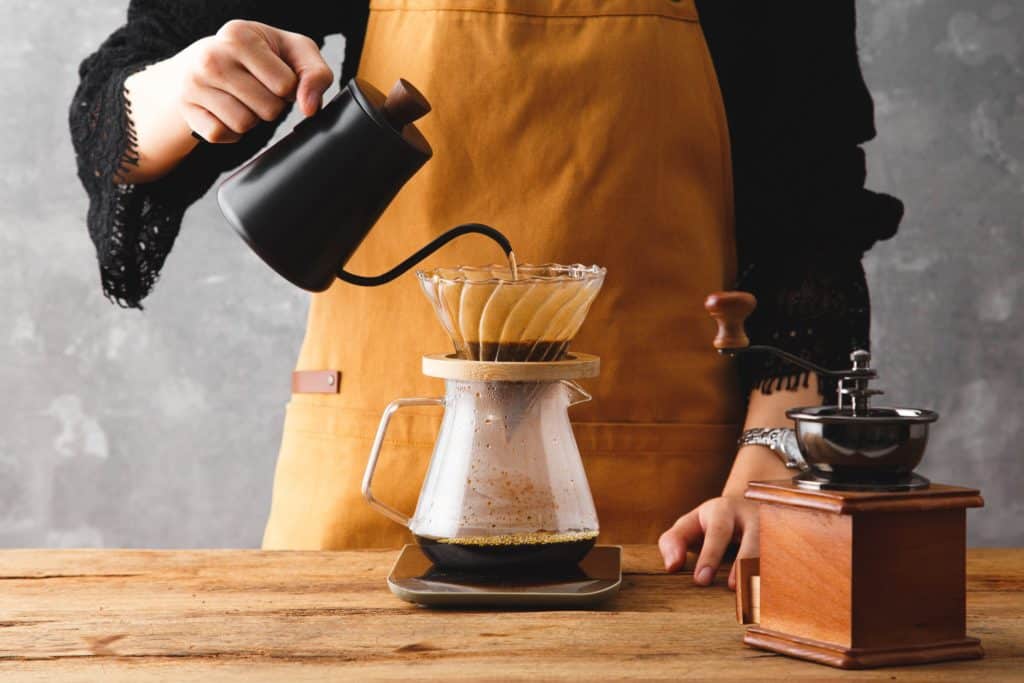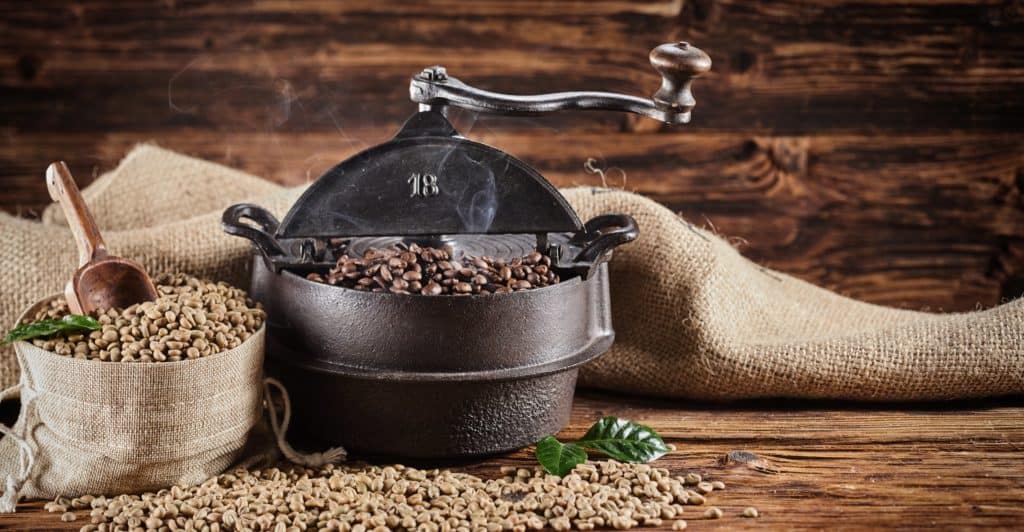
Brewing coffee is an important part of life, and we can all learn from the science behind the brewing process.
Brewing coffee is mostly a physical change, as the chemicals that give the coffee flavor are extracted from the bean into hot or cold water. All of the chemical changes to the coffee that give it its flavor are done during the roasting process, long before the coffee is brewed.
But let’s take a closer look at the simple physical changes that make coffee drinkable, as well as the more complex roasting process that brings out the actual flavor in the beans.
How Extraction Works
Water is good at dissolving all sorts of compounds, including those found in coffee. When coffee beans are ground up and soaked, the polarized water molecules will begin tearing the little molecules apart that make up the coffee grinds. This process doesn’t require that the molecules actually attach to the water molecules, it lets the newly free molecules float loose about the solution.
While heating up, the water speeds up this process by increasing the amount that the water moves around, and it is not necessary for the coffee grinds to actually dissolve. This is the reason that cold brew is possible, even if it takes longer than hot brewing. It’s also the reason that brewing coffee doesn’t really involve any chemical changes.
This will extract fats, oils, and acids first, then sugars, and finally plant fibers. The amount of time that you spend brewing your coffee determines the flavor that it ends up with by determining how many of each of those chemical components make it into the water. If you can hit the extraction sweet spot, you’ll get coffee that is sweet and not too bitter.
Under brewing will give you coffee that’s acidic but lacks that coffee flavor, while over brewing will result in coffee that’s bitter and difficult to drink.
While brew times determine the flavor of the end result, it doesn’t influence the actual chemicals that are found in the coffee beans. The thing that determines those flavors is actually the roasting process.
What Happens When You Grind Coffee Beans?
The purpose of grinding coffee beans is to increase their surface area. The finer you grind the coffee, the more it will be exposed to the water during the brewing process. Unlike apple seeds, which release certain toxins when ground up, coffee beans maintain just about the same chemical makeup whether they are ground or not.
Increasing the surface area of the coffee allows it to be dissolved into the water much faster. This is because the water molecules are better able to interact with the chemicals that are in the coffee beans if they are directly exposed to the water.
Chemical Impact of Mold on Coffee Beans

Aspergillus ochraceus is a kind of mold that can commonly be found on coffee beans. It produces mycotoxin (a fancy word for fungus poison) Ochratoxin A, which can cause kidney problems in all kinds of mammals and a variety of health problems in humans.
While Ochratoxin A can be destroyed by the coffee bean roasting process, there are several factors that can lead to there being a significant remainder of the toxin after all is said and done. Ochratoxin A doesn’t cause any changes in flavor in the coffee but can cause significant discomfort if consumed in high quantities.
Fortunately, most coffee contains far below the amount of mycotoxins that could cause serious harm to people. In fact, all sorts of foods contain trace amounts of mycotoxin regardless of how well stored they are, including raisins, peanut butter, and dark chocolate. While these might not all be healthy foods, they certainly aren’t hazardous.
If you’re still worried about mycotoxins, the best thing you can do is make sure that the coffee you buy is stored properly before you brew it. As long as its container is airtight and is kept in a cool, dark, and dry place, it should be fine.
There is no evidence that hot brewing coffee does anything to dissolve the mycotoxins into the water. This would keep the toxins intact. The only process that coffee goes through during its preparation that changes its chemical composition is roasting, which does destroy Ochratoxin A.
The Chemical Makeup Of Coffee
Once coffee beans have been roasted, their chemical makeup is pretty much final. A few of the big names in this list are Caffeine, Tannin, and Citric Acid, but it contains many more important compounds.
In fact, once coffee beans have been roasted, it contains over eight hundred individual compounds, over a third of which are aromatic compounds, or compounds that produce smells. This is why a freshly brewed cup of coffee smells so good.
The primary categories of compounds that make up coffee are carbohydrates, oils and fats, proteins, plant matter, and sugars. The carbohydrates and sugars are critical, as they are the thing that makes roasting coffee effective as a method of infusing it with flavor. Of these, proteins and fixed oils are the most prevalent, with proteins making up 13% of the bean and fixed oils making up 10-15%.
The oils and fats meanwhile give the coffee its distinctive acidity, and since they are easier to dissolve than the other ingredients in coffee, they are the reason that under-brewed coffee is often considered to be overly acidic.
The Chemical Process of Roasting Coffee

While brewing coffee does nothing to change the chemicals that are in the coffee, which makes it a physical and not a chemical reaction, roasting coffee is a process that consists of multiple endothermic and exothermic chemical reactions.
Most of the time that coffee spends roasting, it is absorbing heat. Using this heat, the various reductive sugars in the bean act as electron donors for some of the other compounds, allowing many new chemicals to be produced. This is known as a Maillard Reaction.
While the browning of coffee beans is associated with the Maillard Reaction, it is actually caused by a different chemical reaction that occurs at the same time.